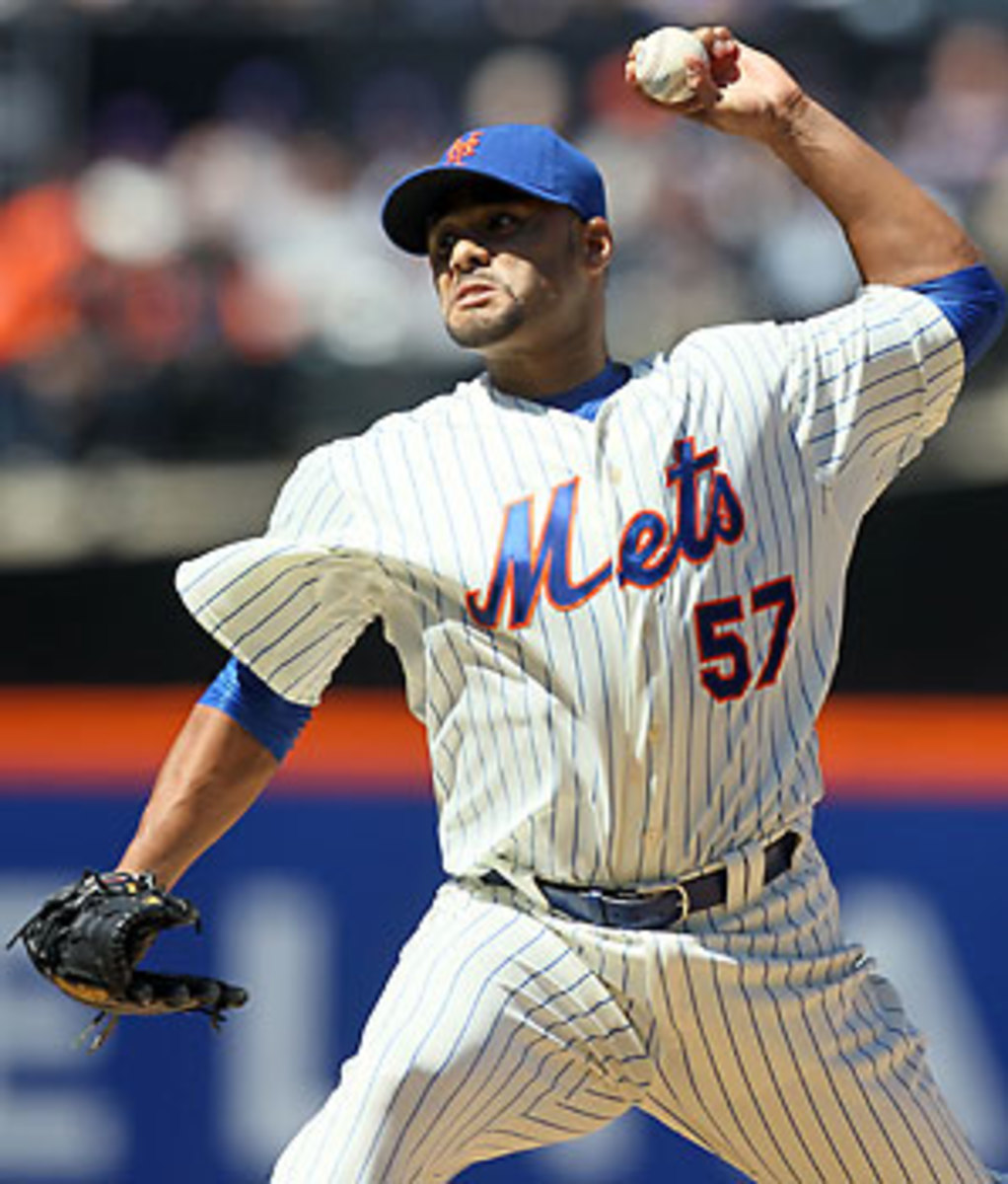Mets get good win and great news: Santana looks like his old self
It was a vintage performance from the Mets ace, even if it only lasted for five shutout innings, a brief outing following a prolonged absence of 19 months (581 days, to be exact) since the lefthander last pitched in a major league game after undergoing shoulder surgery in Sept. 2010.
Santana allowed no runs, two hits and two walks while striking out five over his five frames in the Mets' 1-0 season-opening win over the Braves at Citi Field on Thursday afternoon.
"I'm happy," he said. "Finally, I had the opportunity to go out there in a game that counts and definitely get it out of the way. It was very important, and it was good."
Santana threw 50 strikes among his 84 pitches and, though none of his 54 fastballs touched 90 miles per hour -- he maxed out at 89.7, per Pitch f/x data on BrooksBaseball.net -- he didn't need any more velocity given the separation he had with his 16 sliders (80-81 mph) and his 14 changeups (77-78). ). Though his early-career fastball velocity averaged as high as 92.4, Santana was successful while regularly throwing 89 in 2010.
The performance was reminiscent of the pitcher we've come to know since he made his major league debut 12 years and 2 days ago, during which time he has won 133 games and two AL Cy Young awards with a 3.10 career ERA, even if such dominance is fairly new to his teammates.
New York's roster has undergone so much turnover since his last outing on Sept. 2, 2010, that only seven Mets have appreciable experience as his teammate. Of the 17 other players, nine had never played alongside him in the big leagues, three only made their debuts as September call-ups in the month Santana was injured and five have less than a year of service time alongside him.
Starting catcher Josh Thole praised his ace's performance, but because he only caught Santana for 17 innings in 2010, he couldn't compare Thursday's outing with any start before the injury.
"He did an outstanding job today," Thole said. "He made his pitches. That's what Johan does, and that's what Johan has always done, I think."
The front office and coaching staff have also turned over since then.
"I've only been around this guy for a year, but the stories I've heard in the past, he's lived up to everyone of them," manager Terry Collins said.
If Santana continues to pitch like he did in his 2012 debut, the Mets are going to love getting to know him.
But, right now, he's still learning who his post-shoulder surgery self is. Santana said he expects to gain more strength and stamina as the year progresses. He may regain a little velocity. For the moment, however, he's not sure how he'll feel tomorrow.
"Now getting through that recovery time, for my next outing, we'll see how it goes," he said. "As far as everything today, I felt good."
When Santana pitched in his first minor league game last July, he later said he felt really good while on the mound, but he didn't bounce back as he normally did, needing five weeks before pitching in competition again.
The Mets will be very conservative with their ace, who is due $49.5 million this year and next, the final two guaranteed seasons on his contract. Collins set a pre-spring training goal of 25 starts for his ace and said on Thursday that Santana would be limited to a maximum of 95-to-100 pitches per outing.
The particular concern for the Mets is that shoulders are still the untamed frontier of pitching injuries. The medical world has learned to treat most elbow ailments reliably, but shoulder injuries remain notoriously more difficult to return from. Among the other pitchers with the same condition as Santana, who tore his anterior capsule, are the injury-prone Mark Prior, Rich Harden and Chien-Ming Wang.
That could partly explain why, in discussing how meaningful his return to the majors was, Santana couldn't stop himself from saying "we" in reference to the team of doctors, trainers and coaches who supported him during his rehabilitation.
"We worked hard," he said. "We never stopped. We went through a tough time. We had good days, bad days, but we learned a lot. All we wanted to do was come back to help somehow."
When Santana came off the mound after escaping a fifth-inning bases-loaded jam, Collins came over to congratulated him on a great outing, to which Santana initially said, "I've got another one in me."
Collins replied, "Yeah, I know, but that's enough for a day."
Thursday afternoon was full of dominant pitching performances across baseball, but while Justin Verlander and Roy Halladay -- the caliber of company Santana used to keep -- both threw eight innings, the lefty's five can't be called anything but an unqualified success.
With R.A. Dickey, Mike Pelfrey, Jonathon Niese and Dillon Gee filling out the rest of the rotation, New York has a competitive staff that has lacked a gamechanger to lead them.
"He's the guy who can change the dynamics of our pitching staff," Collins said.
Each Santana start will be treated as a precious commodity, given the nature of recovering from a shoulder injury. But two dozen more outings like that one can very quickly reverse the outlook of the Mets' season.





